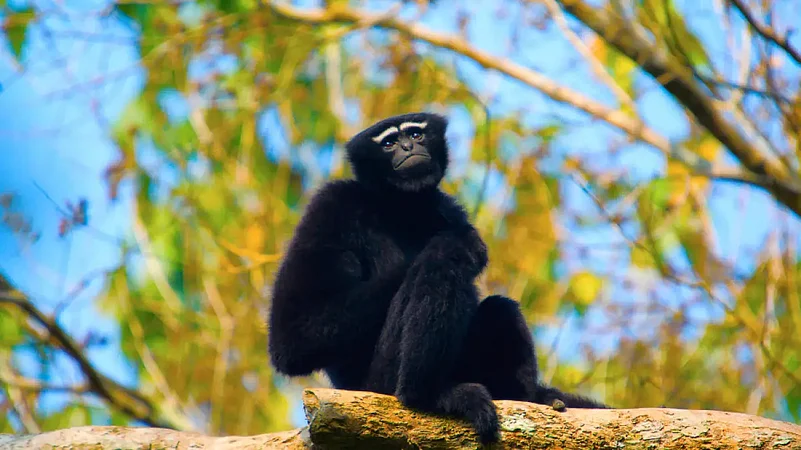With long and slender arms, Hoolock Gibbons are the only apes found in the country. It was earlier believed that India had two separate species of the gibbon – the hoolock gibbon and the eastern hoolock gibbon. But recently, a study stated that hoolock gibbon (Hoolock hoolock) is the only gibbon found in India. You can spot the beautiful primate in Meghalaya.
Nokrek National Park
Hosting one of India’s most precious and unique ecosystems, Nokrek National Park is part of the Nokrek Biosphere Reserve and a natural treasure of Meghalaya. It is known for its endangered Hoolock Gibbon population and also for being home to one of the earliest citrus species on the planet. Nokrek is a haven for nature enthusiasts and is filled with trails for hikers and explorers. The highest peak in the Garo Hills – Nokrek Peak – is located here. At an elevation of more than 1400m, it is quite a climb – rewarding those who reach the summit with mesmerizing views. The Simsang River, which drains a major part of the lush Garo Hills, finds its origin in the Nokrek range. To enjoy Nokrek at its fullest, travellers are recommended to set up their base at one of the village-run resorts set up on the fringes of the National Park.

Daribokgre is another village located close to Nokrek National Park and featuring an Indigenous inspired setting complete with the traditional Garo homes (nok achik) and dorms (nok pante). There are quite a few interesting treks in the vast and pristine Nokrek area. One particular trek leads you to a WWII plane crash site while there are trails that are built around the legend of the Mande Burung – the Garo Hills’ very own BigFoot.
Selbalgre Gibbon Reserve
The tiny village of Selbalgre, 32km from Tura, is home to the unique Gibbon Reserve. Protected by the village community, this wildlife reserve is the ideal habitat for the hoolock gibbon, the only tail-less ape species found in India. Locally known as huro, the villagers consider hoolock gibbons sacred and traditionally believe that if a gibbon is hunted or killed, a curse would fall on the village. The forest reserve lies deep within the recesses of the Selbalgre village, which stretches along the scenic banks of the Selbal stream. Gibbon sightings are typically made early in the morning. Visitors need to hike deep inside the forest.
















